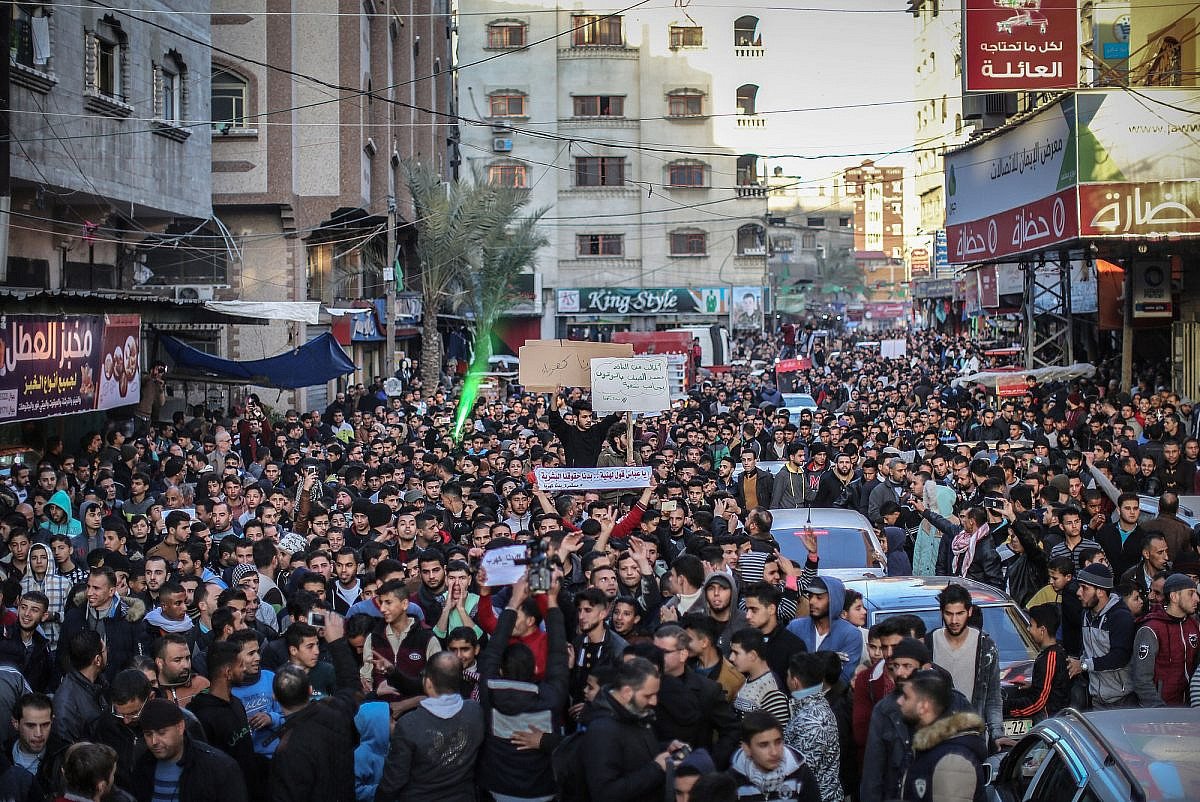Last week, the southern governorate of Khan Younis and other areas in the center of the Gaza Strip witnessed tense scenes as several thousand Palestinians took to the streets to protest frequent power outages, food shortages, and overall harsh living conditions. Marching under the banner of “Bidna N’eesh” (“We Want to Live”), the mass protests mark a significant expression of public resentment that has accumulated among the blockaded population for years.
In response, demonstrations in support of Hamas, the Islamist party ruling the strip, paraded down the streets cheering for the government and confronting those who were not voicing support for the movement. The police intervened shortly afterward, reportedly confiscating cell phones and making multiple arrests.
The protests followed days of intense frustration and dispute with the Hamas government, which began after a Khan Younis resident was killed when one of the walls of his house fell on top of him as local authorities attempted to demolish it, claiming it was initially built on a public road. The authorities alleged the man’s death was a tragic accident, firing the mayor of the responsible municipality.
Characterized by their mobility, brevity, and direct impact, the marches appear to be coordinated by grassroots movements through online platforms and social media. Several Palestinians who were among the crowds told me that their demonstrations stem from a fundamental demand for their basic human rights, which include necessities like public services, employment, freedom to travel, and the ability to engage in outside commerce. At the time of writing, the Hamas government has not shared with the public any foreseeable solution to any of these grievances, or how it will address people’s anger.
Electricity has been at the center of the protesters’ demands. While Gaza’s energy crisis predates the current protests, the scorching heat waves enveloping the region this summer have driven temperatures to soar above 38 degrees Celsius (over 100 degrees Fahrenheit) in the strip. The heat has only added to the growing discontent among the territory’s 2.3 million Palestinian residents, who are confined to a stretch of land of around 360 square kilometers that has, since 2007, been cut off by an Israeli blockade that affects every facet of daily life.
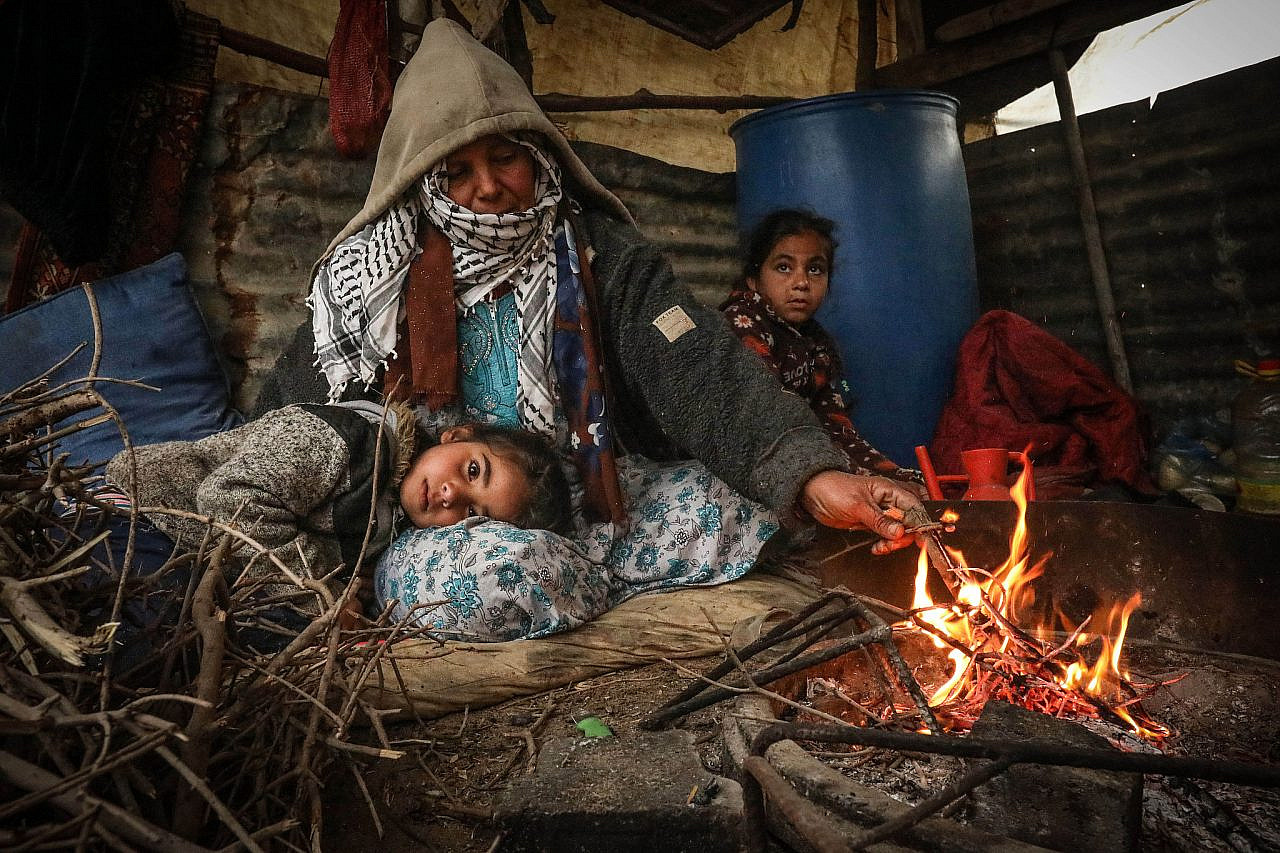
This collective frustration has been building over a considerable period of time, as Gaza’s population has to subsist on a daily ration of only four-to-six hours of electricity. Certain residences and businesses resort to private generators or solar panels in order to cope with the prolonged power outages. For others unable to afford such costly equipment, modest battery-powered LED lights provide makeshift illumination, while others fan themselves with plastic trays to try and beat the heat.
According to local energy bodies, Gaza requires approximately 500 megawatts of power per day during the summer season. However, it currently receives a mere 120 megawatts from Israel, with the enclave’s solitary power plant — repeatedly damaged by Israeli military assaults and weakened by restrictions on materials — contributing an additional 60 megawatts. Lately, social media footage has shown Gaza shrouded in darkness at night, with few lights emanating from its cities.
While the public and the Fatah-led Palestinian Authority in the West Bank predominantly attribute Gaza’s challenges to Israel’s occupation, many people believe that Hamas still has some capacity, and the obligation, to initiate helpful measures, including by increasing the power plant’s production and operating it at maximum capacity, especially during the summer.
Bearing the toll
Over the past 16 years, Gaza has become a crucible for enduring humanitarian, economic, and political hardship. The enclave has experienced several rounds of deadly wars with Israel, most devastatingly in the summer of 2014. The closure imposed on all of Gaza’s entry points has plunged the economy into decay, leading to a sharp rise in unemployment and resulting in severe scarcity of essential supplies and other resources.
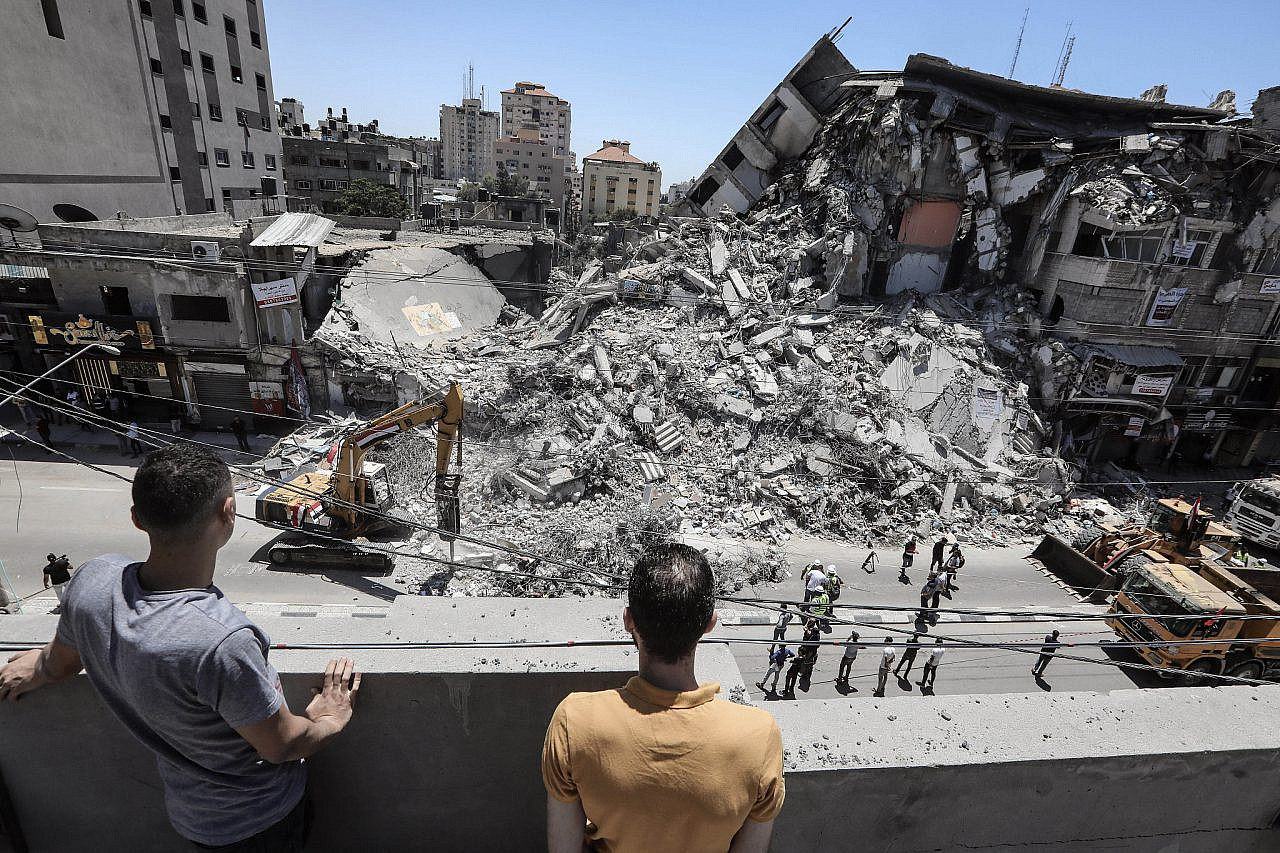
Palestinians have had to navigate significant divisions within their political leadership, the most apparent of which were the armed clashes between Fatah and Hamas in 2007. Hamas had secured victory in the 2006 parliamentary elections from other factions, controlling the legislature and prime minister’s post while Fatah leader Mahmoud Abbas was elected to the presidency.
The Palestinian government was immediately met with sanctions by Israel, the United States, and European countries, exacerbating the factional rivalry that led to Hamas taking over Gaza. Since then, the territory has sunk under the weight of Israel’s crippling siege.
However, the present demonstrations in Gaza stand out due to the heightened level of public engagement and the number of protesters involved. The gravity of the situation is manifold, and the population’s living conditions are only becoming more challenging.
Palestinians have long called for new, inclusive elections, reflecting an exhilarating demand for change. Yet public support for Hamas in Gaza persists, and there is rising concern that the voices of those who seek some form of change and restoration of their rights will be stifled — both by Israeli and Palestinian authorities.
There are several aspects to the evolving complexities among Palestinian political actors. Fatah and Hamas are involved in an ongoing mutual blame game, each attributing Gaza’s troubles to the other party. The PA urges Hamas to take action even as it primarily holds Israel responsible as the occupying power (one which the PA cooperates with under the Oslo Accords). All the while, it is the people who bear the toll and face ominous consequences while the feeble pursuit of reconciliation continues.
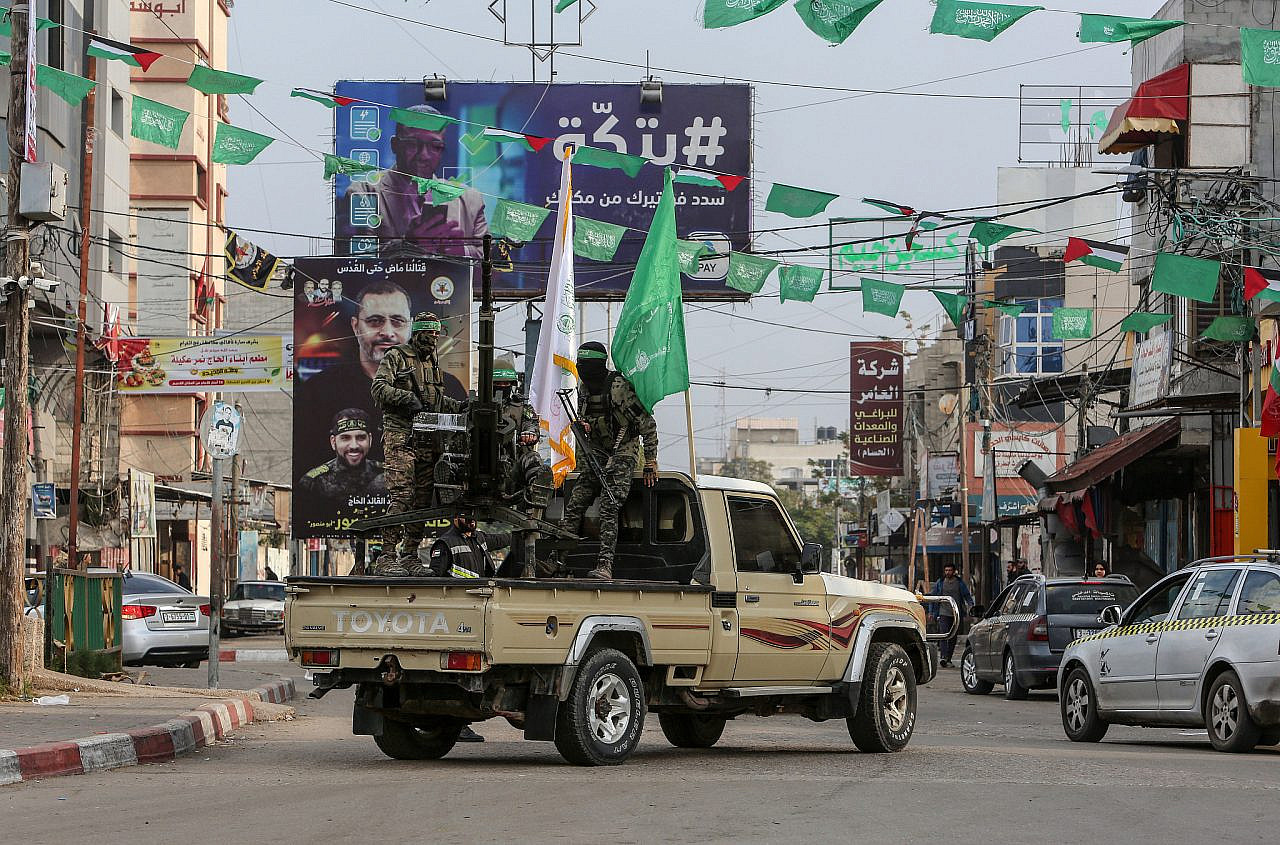
Last but not least, Islamic Jihad, once a marginal movement, has recently emerged as a significant player in the Palestinian geopolitical landscape. During Israel’s latest two wars on Gaza in August 2022 and May 2023, Islamic Jihad displayed relatively independent and effective decision-making power on the military front, although it still seeks the political and military endorsement of Hamas as the ruling authority.
Beyond the social fragmentation in Gaza and the West Bank, one winner is currently taking all: the Israeli far right, which is relentlessly targeting the foundations of the Palestinian struggle and advancing its vision of permanently scattering the Palestinian population into disparate territorial and political enclaves.
Under the leadership of Benjamin Netanyahu, the current government is seizing every opportunity to solidify its presence in the West Bank. This includes the construction of illegal settlements, the annihilation of any attempt at armed or popular resistance, and the annexation of Palestinian land and resources — further weakening the basis of any Palestinian political process.
A united front for liberation
The current protests in Gaza undoubtedly echo the legitimate demands of the Palestinian people, who are deserving and capable of forging a new, united front toward freedom and dignity. But the biggest question remains: do the Palestinian leaders possess the willingness to heed these calls, and to take effective measures toward fulfilling them?
Both external and internal observers often attribute the divisions among Palestinian factions to contrasting political and ideological interests. Yet such differences should, if anything, lay the foundation and impetus for a broad political coalition that can align communal needs with the pursuit of liberation. While some argue that the Palestinian factions are gradually realigning against Israel and not each other, many still hold a sense of despair over whether they will ever see a unified leadership that spans the spectrum of war and peace, resistance and governance, and that brings Palestinians together under one common rule.
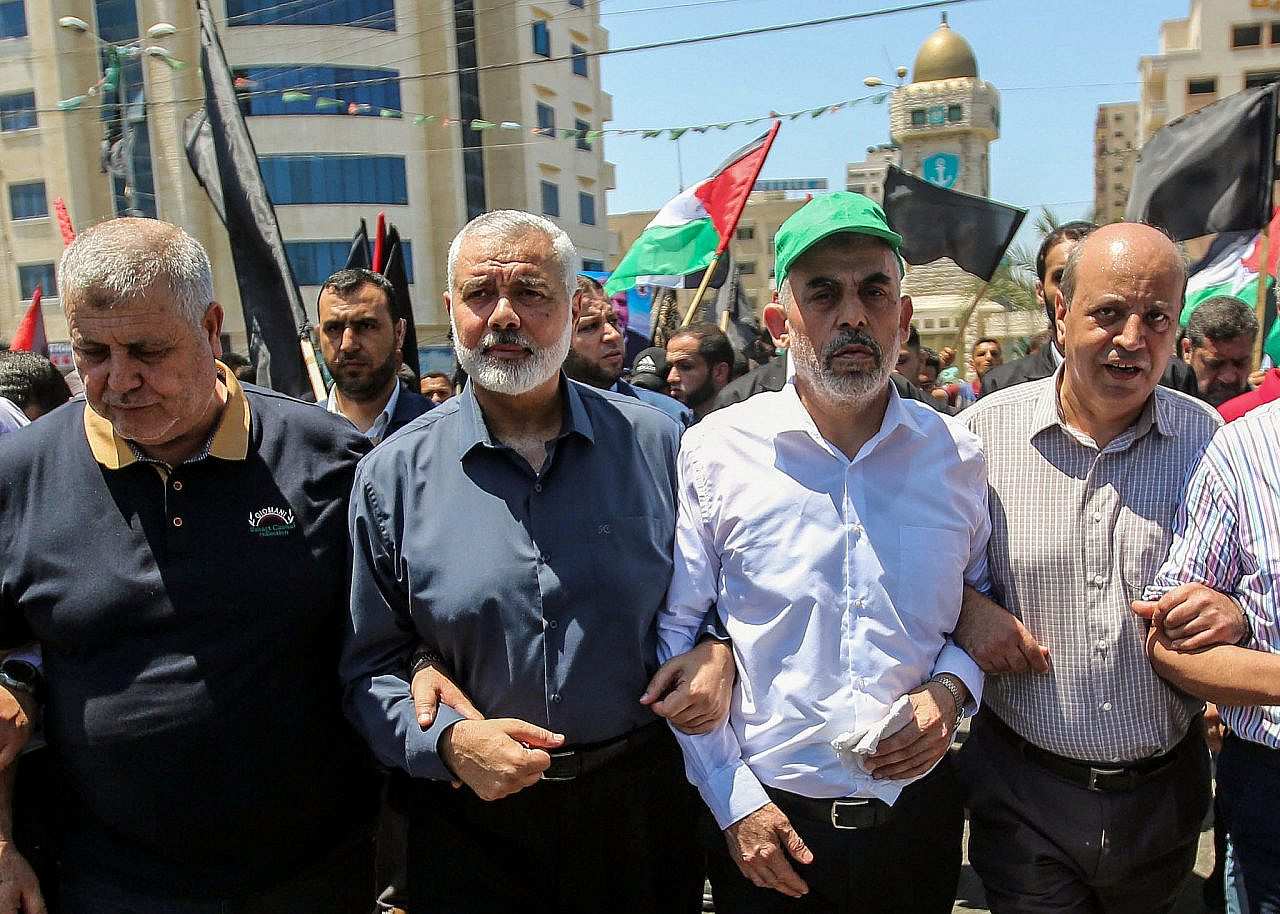
In Gaza, there is a notable sentiment that having an armed presence that safeguards Palestinians’ right to self-defense against Israeli military aggression should not overshadow people’s aspiration to live with as much independence and prosperity as they can muster under occupation. The goal of breaking the Israeli blockade, once the primary beacon of hope for freedom in Gaza, is intertwined with the pursuit of meeting basic needs within Gaza’s borders, like two more hours of access to clean drinking water or electricity a day.
This is accompanied by a widespread view that Hamas, like other Palestinian factions, is trying to control and silence grassroots activism and dissent, eliciting further irritation from the public. The Palestinian leaders’ verbal acceptance of the idea of change should not only mean blending their varying perspectives together, but has to also mean a stop to sweeping the people’s collective calls under the carpet for a better future.
Indeed, the intensification of Israeli attacks on all Palestinians across the land, and the aim to disperse the public sphere in Gaza, make these protests an ideal time to reassert the need for a unified Palestinian leadership that can thrive — one that prioritizes upholding human values and the basic needs of life under occupation, and that does not stumble amid the rapidly changing shifts in the regional and international landscape, which have marginalized the Palestinians’ demands for freedom and for decent living conditions too.
More importantly, the current leaderships — both in Gaza and the West Bank — should refrain from governing by diktat, and should instead respect the will of the majority and adhere to the country’s legal frameworks and vision for liberation. Attempting to force change through open conflict with a discontented public is unlikely to succeed. It has never been a successful or just method to achieve self-determination, especially when led by scattered minority factions, each chanting a different slogan and seemingly unconcerned with democratic representation. Each leader ends up clinging to power with no real intention of improving and safeguarding the lives of their constituents.
Most read on +972
To overcome these challenges, Palestinians must be able to convey criticisms in a way that resonates with the supporters of each party, rather than simply proving their leaders wrong — thereby demonstrating the possibility of unity. The current Gaza protests, and the Unity Intifada that erupted across all of Palestine two years ago, indicate the necessity of such a united path. Once it has been truly achieved, no external influence will be able to hinder, disregard, or fragment the substantial majority of the people from breaking free from their cycle of exclusion.
Until then, the Palestinian people deserve the chance to address the very valid debate over a much-needed policy roadmap that would determine the fate of their struggle. By setting aside divergent realpolitik on the internal battleground, and doing what can be done for the people with the tools they have, only then can they remain steadfast and hopeful in the face of an occupying force.

